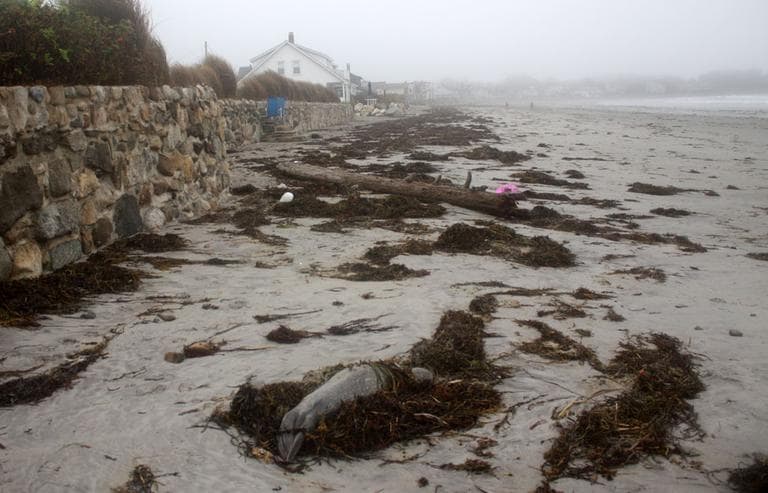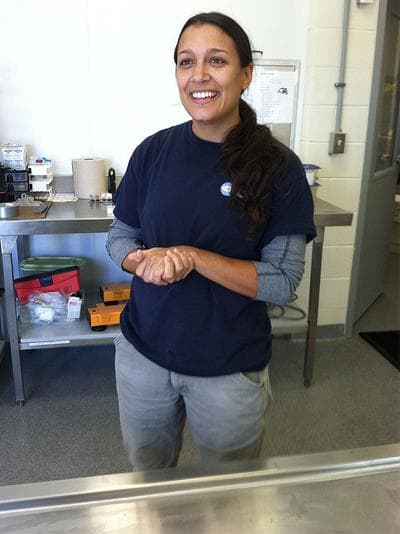Advertisement
Researchers Continue To Probe Deaths Of Young Seals
Resume
Experts are still mystified by the deaths of young seals along the New England coast this fall. They're conducting tests for disease and toxins, and say results could take at least another week.
Since Sept. 1, 128 harbor seals have washed ashore.
It's not unusual for dead harbor seals to wash ashore this time of the year. What is unusual is the number, according to Tony LaCasse of the New England Aquarium.
"This is really an exceptional event," LaCasse said. "The rate for harbor seals in the central New England coast, from about Cape Ann in northern Massachusetts to Cape Elizabeth in southern Maine, is probably three to four times the normal rate."
The area where the seals have been found is expanding. The National Oceanic and Atmospheric Administration says some of the latest washed ashore in Scituate and Cohasset, south of Boston.

Katie Pugliares has been conducting autopsies on the seals. She's a necropsy specialist with the New England Aquarium and says the seals all have at least one thing in common: they are all what's called "the young of the year."
"'Young of the year' are animals that were born early this summer and are now completely independent of their moms," Pugliares said.
Meaning that they have to forage for food on their own. Not all master that skill set. It's common to see a 30 percent mortality rate in the first 12 months of a seal's life.
In a normal year, the beached pups would be emaciated from lack of food. But again, LaCasse says, this is not a normal year.
"To our surprise, those when we did those first autopsies, the blubber layer was adequate on all the animals that we're seeing," he said. That rules out starvation to explain the number of deaths.
There's also no evidence of foul play, as in the shootings of gray seals on Cape Cod over the summer.
As for the harbor seals now washing ashore, Pugliares says some show signs they've had seal pox, considered similar to chicken pox in humans.
In addition, "a lot of them are presenting with significant pneumonia, as to the cause of the pneumonia, it could vary from parasites to viruses to bacteria, but that's something that we can't see with a naked eye; it's information we get from pathologists."
It's been awhile since a large scale die-off like this one. Most significantly, in the winter of 1979-80, hundreds of seals — or sea dogs, as they're sometimes called — died from the outer Cape up to central Maine in what was determined to be an influenza outbreak. In the 1990s many seals died from a variant of canine distemper. Lacasse says they're examining all possibilities.
"In terms of some of the things that we normally see, everything's negative so far," he said. "It leads people to probably think that it could be something environmental or it could be a pathogen that's newer to the region."
This program aired on October 21, 2011.
